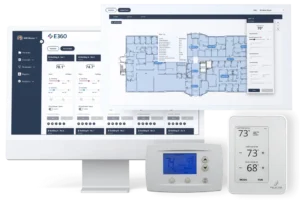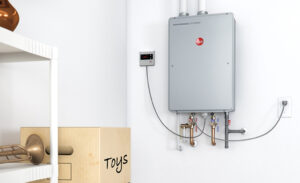In the hustle and bustle of modern life, keeping a home clean and organized can feel like an overwhelming task. Between work, family, and social commitments, it’s easy to fall behind on routine cleaning and maintenance. However, the good news is that with a few clever cleaning hacks, you can streamline your cleaning routine and achieve pristine results without the stress and effort typically associated with deep-cleaning chores. These hacks, which utilize both simple household items and a bit of ingenuity, can help you maintain a fresh, organized, and well-kept home in a fraction of the time. This article delves into the essential cleaning hacks that will transform your approach to cleaning and make it a breeze to keep your home looking its best.
1. The Power of Baking Soda: A Miracle Ingredient
Baking soda, often found in most kitchen pantries, is one of the most versatile and effective cleaning agents at your disposal. It is a natural deodorizer, stain remover, and mild abrasive that works wonders on a variety of surfaces.
How to Use:
-
Deodorize Carpets and Upholstery: Sprinkle baking soda generously on carpets or furniture, leave it to sit for 15-20 minutes, and then vacuum it up. This will eliminate odors and refresh your fabric surfaces.
-
Clean Oven Grates: To remove greasy buildup from oven grates, sprinkle baking soda on them, spray with a little water to dampen, and let it sit for about 30 minutes. Scrub away the grime with a sponge afterward.
-
Unclog Drains: Pour a cup of baking soda down the drain, followed by a cup of vinegar. Let it bubble and fizz for a few minutes before rinsing with hot water. This combination is an effective and non-toxic solution for cleaning drains.
The best part about baking soda is that it’s non-toxic and inexpensive, making it an eco-friendly alternative to harsher chemical cleaners.
2. Vinegar: A Natural, All-Purpose Cleaner
Another staple in every household is white vinegar, which serves as a natural disinfectant, degreaser, and stain remover. Like baking soda, vinegar is both budget-friendly and highly effective, offering an eco-conscious solution to many common cleaning problems.
How to Use:
-
Clean Windows and Mirrors: Mix equal parts vinegar and water in a spray bottle, and use it to clean windows and mirrors. The acidic nature of vinegar will dissolve grime and leave surfaces streak-free.
-
Disinfect Cutting Boards: After preparing food, use vinegar to sanitize your cutting boards. Simply wipe the surface with a cloth soaked in vinegar, and let it sit for a few minutes before wiping dry.
-
Tackle Hard Water Stains: Vinegar is particularly useful for removing hard water stains from faucets, showerheads, and tiles. Apply it directly to the stains, let it sit for a few minutes, and then scrub the area with a sponge.
Vinegar’s low cost and impressive versatility make it an essential tool for anyone looking to reduce their reliance on chemical-based cleaning products.
3. Lemon: A Fresh and Natural Alternative
Lemons are not only a healthy and delicious fruit, but they are also incredibly effective in cleaning due to their acidic properties. The natural oils in lemons can dissolve grease, brighten whites, and leave your home smelling fresh and citrusy.
How to Use:
-
Shine Stainless Steel: To make your stainless steel appliances shine, rub a cut lemon directly onto the surface. The lemon’s acidity will help break down any watermarks or fingerprints while giving it a natural gleam.
-
Tackle Soap Scum in Bathrooms: Lemon juice is an excellent remedy for soap scum and mildew in showers and tubs. Mix lemon juice with a bit of baking soda to form a paste and scrub the affected areas.
-
Whiten Whites: Add half a cup of lemon juice to your laundry to boost the brightening power of your detergent. It helps to lift stains and brighten white clothes without resorting to bleach.
Lemon is a fragrant, natural alternative that can help you tackle everything from grime to laundry stains with minimal effort.
4. Dryer Sheets for More Than Just Laundry
Dryer sheets are often seen as a laundry product, but their uses extend far beyond the dryer. Their anti-static properties and fresh scent make them a helpful tool for dusting, deodorizing, and even preventing static in fabrics.
How to Use:
-
Dusting: Use dryer sheets to dust furniture, TV screens, and blinds. Their texture picks up dust without pushing it around, and the anti-static property ensures that dust doesn’t settle as quickly.
-
Pet Hair Removal: Pet owners can use dryer sheets to wipe down furniture, especially upholstered pieces, to remove pet hair. The sheets help the hair to cling to the fabric, making it easier to remove.
-
Deodorize Shoes: Place a dryer sheet in each shoe overnight to eliminate odors. The scent will linger, keeping your footwear smelling fresh.
Dryer sheets are a convenient and inexpensive tool that can assist with many of your cleaning and maintenance tasks.
5. Tennis Balls for Laundry and More
The humble tennis ball is a surprising yet effective cleaning tool that can help with several household chores. Whether you’re drying heavy blankets or fluffing pillows, tennis balls can make the process quicker and more efficient.
How to Use:
-
Fluff Laundry: Throw a tennis ball in with your laundry, especially when drying bulky items like comforters or pillows. The balls help fluff the fabric, preventing it from clumping together, and speeding up the drying process.
-
Scuff Marks on Floors: Gently rub a tennis ball against scuff marks on your hardwood or tile floors. The rubber will lift the marks without scratching the surface.
-
Clean Blinds: Place a tennis ball in a pair of socks or a cloth bag, and use it to wipe down your blinds. Its rounded shape helps reach each slat, cleaning even those hard-to-reach areas.
Tennis balls are an inexpensive and versatile tool to help with both laundry and floor maintenance.
6. Microfiber Cloths for Smudge-Free Surfaces
Microfiber cloths are a must-have in any home cleaning arsenal. They are incredibly effective at trapping dust, dirt, and grease, and they are ideal for cleaning delicate surfaces without causing scratches. Microfiber also works without the need for cleaning chemicals, making it an environmentally friendly option.
How to Use:
-
Dusting and Polishing: Use microfiber cloths to wipe down surfaces such as countertops, furniture, and electronics. They trap dust and dirt and leave surfaces smudge-free.
-
Clean Windows and Mirrors: When paired with a bit of water, microfiber cloths can quickly clean glass without leaving streaks behind. Simply wipe in a circular motion for a flawless finish.
-
Deep Clean Floors: Microfiber mop heads are ideal for cleaning floors, as they grab dirt and debris without leaving streaks or residue behind.
These cloths are reusable, easy to wash, and long-lasting, making them a smart investment for any cleaning routine.
7. Club Soda for Stain Removal
Club soda is more than just a drink mixer; it’s an excellent tool for removing stains from fabrics and carpets. Its effervescent properties help to lift stains, while its mild carbonation works as a gentle abrasive.
How to Use:
-
Remove Wine Stains: Pour club soda directly onto a wine stain on carpet or upholstery. Blot the stain gently with a cloth, and repeat as needed until the stain is lifted.
-
Freshen Upholstery: Spritz club soda onto upholstered furniture to help lift stains and refresh the fabric.
-
Remove Grease Stains: Club soda can also tackle greasy kitchen stains on your clothes. Pour it onto the affected area, then blot it with a clean cloth.
This simple and inexpensive remedy can help save your furniture and clothing from permanent stains.
8. Cornstarch for Carpet Cleaning
Cornstarch can be an excellent tool for cleaning carpets, especially for lifting greasy stains. It’s a non-toxic, natural powder that can absorb dirt and stains, leaving your carpet looking and smelling fresh.
How to Use:
-
Grease Stain Removal: Sprinkle cornstarch on grease stains on carpets, leave it for about 15-20 minutes, and then vacuum it up. It will absorb the grease, making it easier to remove.
-
Deodorize Carpets: For a quick carpet refresh, sprinkle cornstarch over the carpet, wait 20 minutes, and then vacuum. It neutralizes odors and leaves your home smelling fresh.
Cornstarch is a quick and effective way to tackle stains and odors without using harsh chemicals.
9. Use a Squeegee for Pet Hair Removal
Pet owners know that cleaning up pet hair can be a never-ending battle. A rubber squeegee, typically used for cleaning windows, can be a game-changer when it comes to removing hair from carpets and upholstery.
How to Use:
-
On Carpets and Rugs: Simply run the squeegee across the carpet, and the rubber edges will pull up the pet hair from the fibers.
-
On Furniture: Use the squeegee to remove pet hair from furniture, particularly upholstered pieces. The rubber edge works well to grab hair without damaging the fabric.
A squeegee is a simple, affordable tool that can make your life much easier when dealing with pet hair.
10. Tackle Cleaning in Layers
Cleaning a home can often feel like an overwhelming task, but breaking it down into smaller, more manageable steps can help. Start from top to bottom—cleaning ceiling fans and light fixtures first, followed by counters, shelves, and finally, the floors. By approaching the job in layers, you ensure that any dirt or dust falls onto surfaces that will be cleaned later.
















